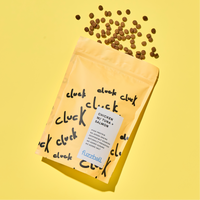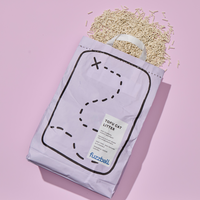How to Spot Nutrient Deficiencies from Your Cat’s Coat and Skin

When it comes to your cat’s health, what you see on the outside often reflects what is happening on the inside. A soft, glossy coat and healthy skin are usually signs of a balanced diet, while dull fur, patchy shedding, or persistent itchiness can point to nutrient gaps. Since cats are obligate carnivores, their food must deliver the right balance of protein, fats, and minerals to keep both body and coat in peak condition.
What Are Nutrient Deficiencies
Nutrient deficiencies occur when your cat’s food does not provide the right balance of protein, fats, vitamins, or minerals needed to keep their body working at its best. Cats rely heavily on meat-based nutrition to support everything from muscle strength to skin elasticity.
When the diet falls short, one of the first places you will notice a change is in the skin and coat. Fur may lose its shine, skin may become dry or flaky, and hair may fail to grow back after grooming. Over time, these outward signs often point to deeper health issues, such as low energy, poor immunity, or increased stress.
Why Is a Balanced Diet Important?
Cats use nutrients every day to repair, grow, and protect their bodies. A balanced diet ensures that new fur grows strong, the skin stays comfortable, and the coat keeps its natural gloss. Since cats are constantly renewing their skin and hair, their food needs to provide steady, high-quality fuel. When their meals are built around real meat and fish, they get all the essential building blocks needed to look and feel their best.
How Do Nutrient Deficiencies Affect Your Cat’s Skin and Coat?
Your cat’s fur is mostly made of protein, and their skin relies on healthy fats, vitamins, and minerals to stay strong and smooth. When their diet is missing these essentials, the changes often appear on the outside long before you notice shifts in behaviour or energy.
One of the earliest signs is texture. Fur that once felt soft and silky may start to feel coarse or flat because the body is not getting the materials it needs to keep the hair healthy. The skin can also lose its natural flexibility, which makes it more prone to irritation and scratching. Without a steady flow of nutrients, the natural cycle of fur growth slows down, leaving coats looking uneven or less full than usual.

What Are the Warning Signs of Nutrient Deficiencies?
Visible changes in the skin or coat are strong indicators that your cat’s diet may not be meeting their needs. Here’s what to look for:
|
Sign |
Likely Nutrient Deficiency |
What It Means |
|
Dull or brittle coat |
Low protein or missing amino acids |
Weak hair shafts, poor regrowth, and loss of shine |
|
Dry, flaky skin |
Lack of essential fatty acids (omega-6 or omega-3) |
Compromised skin barrier leading to itchiness and irritation |
|
Patchy hair loss |
Low protein, copper, or zinc |
Hair fails to grow back after grooming or clipping |
|
Faded coat colour |
Copper deficiency |
Pigment loss, leaving the coat looking washed out |
|
Cracked paw pads or sores |
Zinc deficiency |
Impaired healing and thickened, painful skin |
|
Excessive shedding |
Protein imbalance |
Coat cycles speed up, leading to more fur on furniture and less on your cat |
|
Greasy fur |
Poor fat metabolism |
Natural oils build up, making fur clump or mat easily |
How Do Protein Levels Affect Coat Health?
Protein is the single most important nutrient for coat quality. Adult cats need 30–45% protein on a dry matter basis, and kittens require even more. A diet short on animal protein leads to dull fur and poor regrowth, while high-quality sources such as chicken, tuna, salmon and other proteins keep coats shiny and healthy. That is why Fuzzball recipes always put protein first, making sure every meal is built around real meat that supports your cat’s health from the inside out.
Why Are Fatty Acids Essential?
Fats are not just fuel for your cat’s body; they play a big role in how healthy their skin and fur look. Essential fatty acids, especially omega-3 and omega-6, have to come from food because cats cannot make them on their own. When these are missing, skin can turn dry and flaky, fur can tangle or mat more easily, and irritation often follows.
Fish such as salmon and tuna are natural favourites that help keep skin soft and coats glossy. Omega-3s also calm inflammation, which is especially useful for cats with more sensitive skin. The good news is that these nutrients can come from many parts of their diet, whether it is dry food, wet food, or even snacks. Salmon treats are a simple and tasty way to top up your cat’s fatty acids while still feeling like a special reward.
What Role Do Minerals Play?
Minerals might sound like a small part of your cat’s diet, but they make a big difference to skin and coat health. Copper helps keep fur rich in colour, while zinc supports healing and stops paw pads from drying out or cracking. When the balance is off, the changes can be easy to spot. That is why foods packed with fillers often leave cats looking a little less vibrant than they should.

How to Support Your Cat’s Skin and Coat Through Diet
While grooming helps with shedding and distributes natural oils, the biggest improvements come from food. A shiny coat starts in the bowl, not at the brush.
Here are a few easy ways to support skin and coat health through food:
- Pick high-protein meals made with real meat such as chicken, tuna, salmon, beef, etc.
- Avoid foods that use unnecessary fillers, added sugars, or salts.
- Add fish-based treats that are naturally rich in omega-3 fatty acids.
-
Keep meals consistent, since sudden changes can upset your cat’s system.
When cats eat a balanced diet filled with protein, fatty acids, and essential minerals, their skin stays comfortable, and their coat looks healthier with much less effort.





